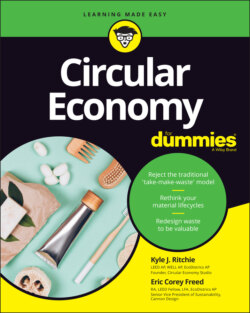Читать книгу Circular Economy For Dummies - Eric Corey Freed - Страница 61
The Drive to Make Money
ОглавлениеThe primary motive of any business is to make money. There’s nothing wrong with that; without the drive to make money, why would businesses open at all?
Because of this basic fact, one of the first drivers we discuss is how the circular economy increases profits. It turns out that eliminating waste from your supply chain by reusing materials or sourcing better materials can translate into significant cost savings.
According to a report by the Ellen MacArthur Foundation, a transition to the circular economy represents a potential net savings in material costs between $340 and $380 billion. The report goes on to state that a fully advanced transition could net a savings of up to $630 billion. And that’s just savings from materials.
There are also considerable savings in energy and operations to be had, which indirectly translates into carbon emission reductions as well. Some of the savings will be recouped by the company directly, but some of the savings will benefit the city.
Let’s explore some of these cost-and-operational savings:
Just one recycled plastic bottle saves enough energy to power a 100-watt bulb for 4 hours (while also creating 20 percent less air pollution when compared to manufacturing a new bottle).
If the United States were able to boost its recycling rate to 75 percent (from the current 34 percent), it would be the equivalent (in emissions) of removing 50 million passenger cars from the roads.
The energy needed to make 1½ million tons of plastic could power 250,000 homes. Every year, humans produce 300 tons of plastic.
Materials such as glass and aluminum are infinitely recyclable.
A single ton (2,000 pounds) of recycled paper saves over 350 gallons of oil, 17 trees, and a large area of landfill.
